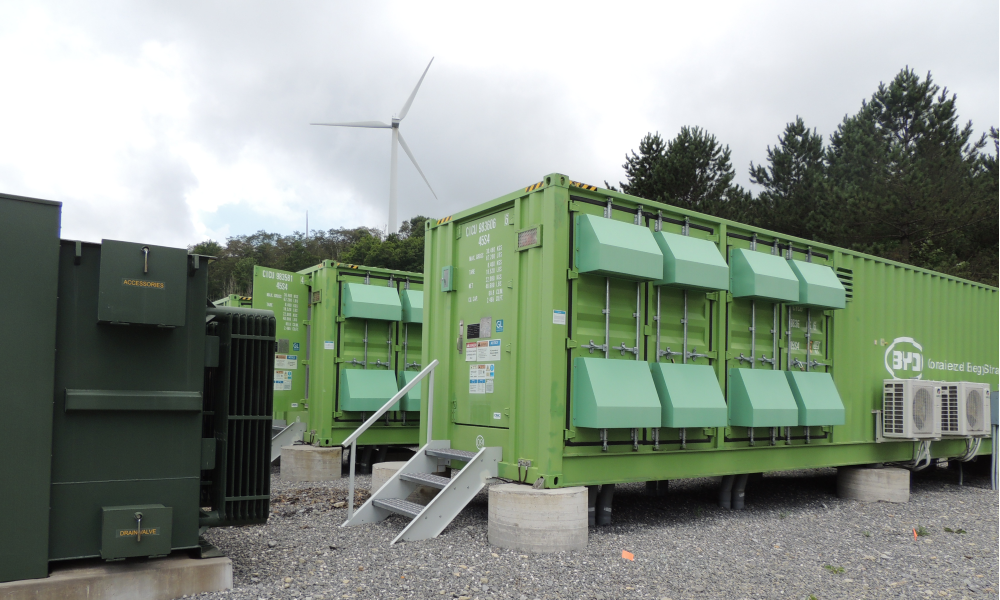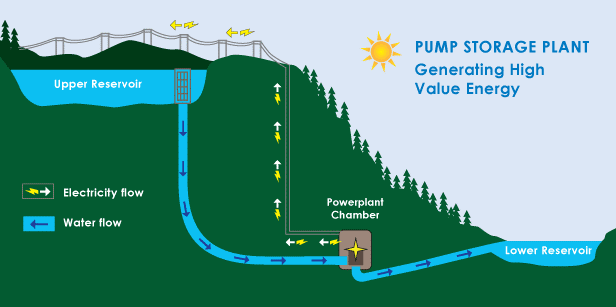
Overview
One of the greater challenges associated with large-scale deployment of renewable energy technologies is that the two most common renewable energy technologies, wind and solar, are intermittent. In recent years, large-scale storage has emerged as a potential solution, as the costs of advanced power storage technologies have dropped significantly, and because the implementation of storage not only alleviates intermittency but also can bring greater stability to the power grid. Advanced and sophisticated storage technologies now being deployed will likely induce even greater adoption and deployment of solar and wind power throughout the U.S. and globally as well. A few of the storage technologies gaining attention in recent years include a range of battery technologies, pumped storage hydropower, flywheels, and use of compressed air.
Pumped Storage Hydropower (PSH) has been very effective when coupled with utility-scale power production. The basic function of PSH is to utilize power during times of low demand to pump water to a higher elevation, to be released later through a turbine to produce power when demand is high, as shown in the schematic below. A disadvantages of PSH is slow startup and shutdown times, so this technology is not suitable for fast-response grid services.
Also gaining popularity at utility scale are lithium-ion batteries. At present, numerous companies are investing in the integration of batteries with utility-scale wind and solar power plants. The world’s largest battery is in Australia has a power rating of 100 MW with stored energy potential of 129 megawatt-hours (MWh). The battery enables the sale of energy when demand and costs are high, energy that was generated and captured during a period of lower demand and cost. Batteries can be employed to serve in a faster-response grid scenario.

Our Involvement
The Center for the Advancement of Sustainable Energy employs sophisticated modeling techniques to demonstrate the value proposition of coupling large-scale storage with utility-scale and offshore wind power and solar.
